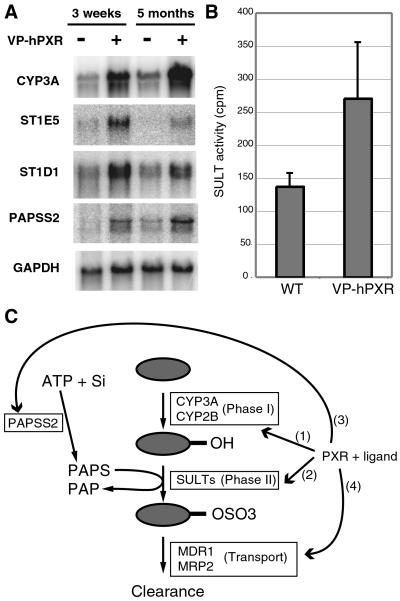Figure 4.
Coordinate regulation of the phase II sulfonation system by PXR. (A) Northern blot analysis of total liver RNA isolated from transgenic Alb-VP-hPXR male mice or nontransgenic littermates of the indicated age. The same blot was reprobed with the indicated labeled cDNAs. Mice encode two isoforms of PAPSS, of which only PAPPS2, not PAPSS1, is induced by the presence of VP-hPXR (not shown). (B) Cytosolic liver extracts from transgenic VP-hPXR male mice or nontransgenic littermates were subjected to enzymatic assay for phenolic SULT activity by using the prototypic substrate p-nitrophenol and the cofactor [35S]PAPS. Shown is the mean ± SD of results obtained from three pairs of mice. (C) Model for PXR as a regulator of sulfonation pathway and drug clearance. Activation of PXR by LCA or xenobiotic compounds (gray oval) results in coordinate up-regulation of drug-metabolizing pathways through transcriptional induction of genes encoding phase I CYP enzymes (1), phase II SULT enzymes (2), a bifunctional enzyme, PAPSS2, that catalyzes conversion of ATP and inorganic sulfate (Si) into the SULT cofactor PAPS (3), and drug transporters such as MDR1 or MRP2 (4).

